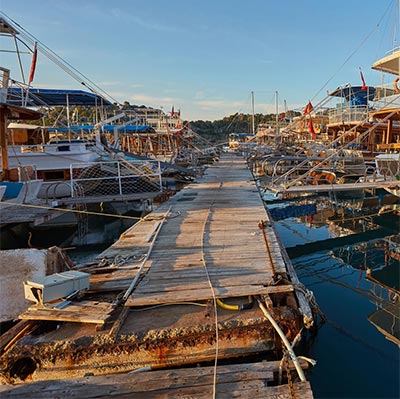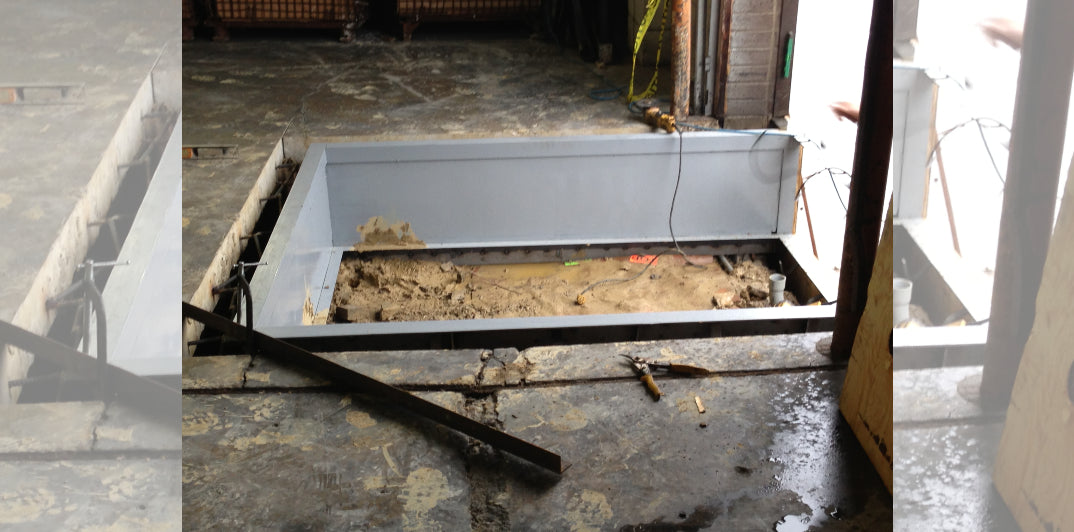The Importance of Timely Dock Repairs for Waterfront Safety
The Importance of Timely Dock Repairs for Waterfront Safety
Blog Article
Efficient Dock Repair Work Techniques: Guaranteeing Structural Integrity
Making sure the structural stability of anchors with reliable repair work methods is paramount for the durability and safety and security of marine facilities. Consequently, choosing the best repair service products, such as composite materials and corrosion-resistant alloys, is crucial for longevity.
Examining Dock Damages
Analyzing dock damages is a vital very first step in making sure the architectural stability and security of any type of docking center. Secret facets to take a look at consist of the dock's foundation, pilings, decking, and hardware (Dock Repairs).
Architectural designers or certified examiners commonly perform these analyses making use of specialized methods and tools. Undersea inspections may utilize sonar tools or from another location operated vehicles (ROVs) to detect immersed damage. Above water, aesthetic evaluations are complemented by utilizing dampness meters and other diagnostic devices to discover underlying issues not immediately noticeable to the naked eye.

Deciding On Fixing Products
Selecting the suitable repair work materials is an essential action in the dock reconstruction procedure, one that straight affects the longevity and performance of the repaired framework. Product selection need to be driven by variables such as ecological problems, load-bearing needs, and compatibility with existing dock parts. As an example, timber is a conventional option for docks as a result of its natural resilience and aesthetic allure. However, selecting the appropriate sort of timber, such as pressure-treated lumber or naturally rot-resistant species like cedar or teak wood, is essential to withstand marine settings.
Along with timber, composite materials are significantly preferred due to their resilience and reduced maintenance needs. Compounds, generally made from a mix of plastic and timber fibers, provide excellent resistance to rot, bugs, and UV damage. For steel docks, selecting corrosion-resistant alloys such as galvanized steel or marine-grade aluminum is necessary to avoid corrosion and make certain structural integrity in saline water conditions.
Epoxy resins and marine-grade sealers are essential for fixing splits and sealing joints, offering a water-proof barrier and enhancing the dock's general toughness. By meticulously choosing high-grade materials, dock repair work can accomplish resilient outcomes, thereby protecting against future deterioration and guaranteeing safe, trustworthy usage.
Architectural Reinforcement Methods
Effective structural support techniques are critical in making sure the stability and durability of dock repair work. One fundamental technique involves using steel or composite reinforcement bars (rebar) within concrete frameworks. Rebar provides added tensile stamina, avoiding cracks and distributing tons more equally. This technique is especially efficient for anchors exposed to heavy lots or harsh environmental conditions.
One more vital technique is the application of fiber-reinforced polymers (FRP) These products offer high strength-to-weight ratios and outstanding resistance to deterioration, making them excellent for enhancing wood or concrete anchors. FRP can be applied in strips or sheets and adhered with epoxy materials to enhance structural stability.
Supporting and securing systems additionally play a critical duty in structural reinforcement. Cross-bracing, using metal or wood light beams, can neutralize side forces, minimizing guiding and activity. Securing systems, such as helical piers or driven stacks, give a secure foundation by transferring tons to deeper, extra steady soil layers.
Finally, the integration of load-distribution plates can help disperse weight a lot more equally across the dock's surface area, reducing local anxiety factors. These techniques jointly ensure that docks continue to be robust and secure, capable of standing up to the rigors of their operational atmosphere.
Advanced Repair Service Techniques

Another innovative method includes undersea welding, which permits repairs to be conducted without the demand to dewater the area. This method is particularly beneficial for dealing with structural problems in submerged dock components, guaranteeing minimal disturbance linked here to operations. Boosted welding methods, paired with robotic systems, supply precision and integrity, therefore expanding the life expectancy of the dock.
Furthermore, cathodic protection systems are executed to avoid rust in metal dock frameworks. By using sacrificial anodes or amazed current systems, these techniques successfully alleviate the electrochemical processes that result in product wear and tear.
Last but not least, advanced tracking technologies, such as architectural wellness surveillance (SHM) systems, give real-time information on the condition of dock frameworks. These systems enable aggressive maintenance and timely interventions, inevitably making certain the lasting architectural stability of the dock.
Upkeep and Avoidance
Upkeep and avoidance are basic concepts that underpin the longevity and safety and security of dock frameworks. Routine inspections are extremely important, enabling early discovery of damage, potential weaknesses, and ecological effects. A proactive approach, involving Learn More Here routine look for rust, rot, and structural shifts, mitigates costly repairs and lengthens the dock's operational life.
Precautionary steps need to consist of applying safety coverings to steel parts to defend against rust and utilizing cured timber to withstand degeneration. Furthermore, ensuring proper water drainage and ventilation can protect against water accumulation, which is a common reason of structural destruction. Incorporating high quality products and sticking to producer standards during building and repair service stages also play vital duties in improving longevity.

Educating workers in dock maintenance ideal methods ensures regular application of precautionary actions. Leveraging technological advancements, such as drones for examinations and sensors for real-time tracking, can better enhance maintenance efforts. By focusing on upkeep and prevention, dock proprietors can make sure architectural honesty, functional safety and security, and affordable management over the dock's lifespan.
Conclusion
Finally, maintaining the architectural integrity of marine facilities demands extensive dock More about the author repair service methods. Complete assessments utilizing sophisticated tools uncover both noticeable and hid damages, while the selection of appropriate repair materials enhances resilience. Implementing structural reinforcement methods addresses stress points properly. Advanced repair work techniques, paired with regular maintenance methods, make sure the dock stays functional and secure under diverse ecological conditions. Adopting these methods substantially prolongs the life expectancy and functionality of aquatic infrastructure.
Making certain the structural stability of anchors through efficient repair service strategies is paramount for the durability and security of marine centers.Choosing the proper repair materials is a pivotal action in the dock repair process, one that directly affects the durability and performance of the fixed structure.Reliable structural reinforcement methods are important in making certain the security and long life of dock repair services. By focusing on maintenance and prevention, dock owners can make certain structural stability, functional safety, and cost-efficient administration over the dock's life-span.
In verdict, preserving the structural stability of marine centers requires extensive dock repair work strategies.
Report this page